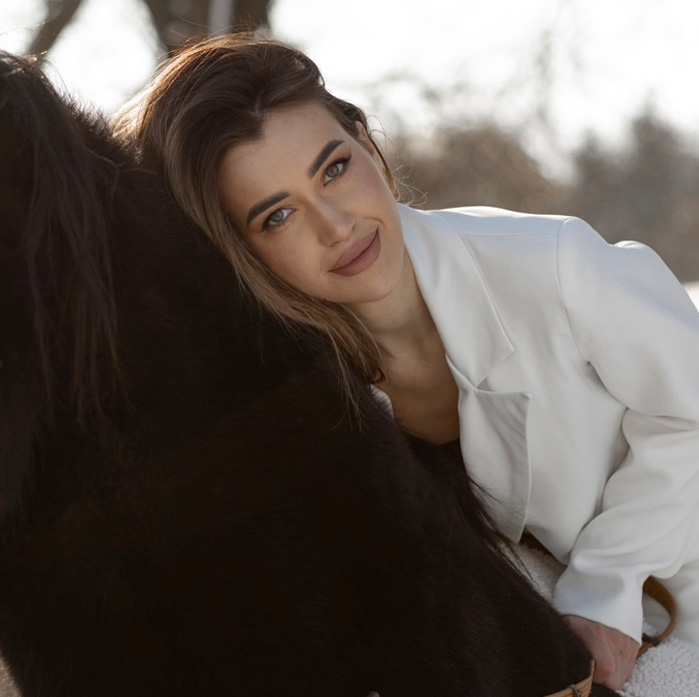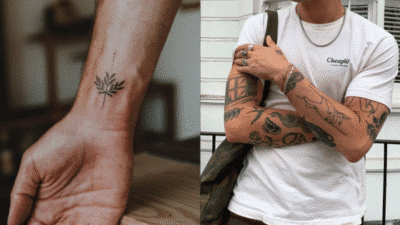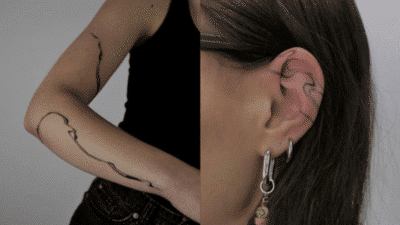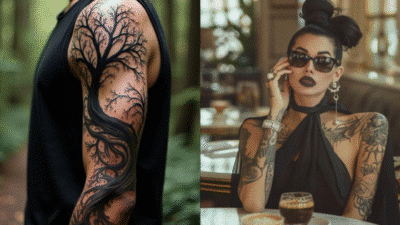

Tribal tattoo designs for men are a popular choice because they carry deep meaning and bold visuals. These tattoos often reflect strength, heritage, and personal identity. They use strong lines and shapes to create patterns that stand out clearly on the skin.
Men choose tribal tattoos for their cultural significance and unique style. Different designs carry various stories, which makes picking the right one important. Placement and detail can also change how the tattoo looks and feels to the wearer.
Working with an experienced artist helps bring the design to life in a way that fits the person’s body and style. Tribal tattoos blend tradition with modern art, making them timeless and striking choices.
Key Takeaways
- Tribal tattoos often symbolize strength and identity.
- Choosing the right design and placement is key.
- Skilled tattoo artists ensure the best style and detail.
Meaning and Symbolism of Tribal Tattoos
Tribal tattoos carry deep meanings connected to history, culture, and identity. They often represent strength, heritage, and personal achievements. Understanding these meanings helps explain why they remain popular today.
Cultural Origins and Influences


Tribal tattoos originated from ancient cultures like Polynesian, Maori, Native American, and African tribes. Each culture used tattoos as a way to mark social status, bravery in battle, or spiritual beliefs.
For example, Polynesian tattoos often told the story of a person’s life and ancestry. Maori tattoos, called moko, were unique face designs showing family and tribal connections. In Native American tribes, tattoos could protect the wearer or symbolize important events.
These designs were more than decoration. They were sacred symbols passed down through generations.
Common Tribal Tattoo Symbols


Many tribal tattoos use shapes that are easy to recognize. Some popular symbols include:
- Spirals: Show growth and change.
- Triangles: Represent strength and balance.
- Animal motifs: Like sharks or eagles, symbolizing power or freedom.
- Lines and dots: Often used to mark milestones or rank.
Patterns like repeating waves can mean water, life, or movement. Each symbol has specific cultural meanings tied to the tribe it came from.
Modern Interpretations


Today, tribal tattoos are often adapted for personal style rather than traditional meaning. Many men choose designs for their bold look or to reflect their identity.
Some modern tattoos combine various tribal styles, creating new patterns that don’t belong to just one culture. This can sometimes lead to confusion or disrespect when original meanings are ignored.
Still, many wearers find tribal tattoos represent strength, protection, and connection to ancient roots. The designs remain a popular choice because of their striking appearance and deep symbolic history.
Popular Types of Tribal Tattoo Designs for Men
Tribal tattoo designs often carry deep meanings tied to culture, heritage, and personal identity. Different tribes have unique styles that stand out for their patterns, shapes, and symbolism.
Polynesian Tribal Tattoos


Polynesian tattoos use bold black lines and geometric shapes to tell stories about family, achievements, and spiritual beliefs. These tattoos often cover large areas like arms, legs, or the chest. Common symbols include:
- Shark teeth for protection
- Tiki faces representing ancestors
- Spearheads symbolizing courage
The designs often connect different patterns to show a person’s role in their community. Polynesian tattoos are created with great care, along with respect for the culture’s history.
Maori Tribal Tattoos


Maori tattoos, or Ta Moko, are famous for the spiral and curved designs that cover the face or body. Each tattoo is unique, telling the wearer’s genealogy and life story. The lines are thin but detailed, creating a striking look.
These tattoos are more than decoration; they are a way to honor family, social status, and tribal identity. The facial tattoos especially hold great cultural importance and are often linked to rites of passage.
Samoan Tribal Tattoos


Samoan tattoos, called Pe’a for men, are large and often cover the body from the waist to the knees. The designs feature patterns based on nature—like waves and animals—and symbols of strength and leadership.
The process of receiving a Samoan tattoo is long and painful, showing endurance and bravery. These tattoos are a mark of respect and connection to Samoan history and tradition. Each design follows strict cultural rules and meanings.
Borneo Tribal Tattoos


Borneo tattoos come from the indigenous tribes in Malaysia and Indonesia. These tattoos are usually made up of simple lines and shapes, with images of animals, plants, and spirits.
The tattoos symbolize protection, healing, and connection to nature. They are often placed on the arms, chest, and back. Borneo designs are less crowded, with clear, bold shapes that tell stories of the wearer’s life and environment.
Placement Ideas for Tribal Tattoos
Tribal tattoos can fit many parts of the body. The choice depends on size, visibility, and personal meaning. Popular spots include the arms, chest, shoulders, back, and spine. Each area offers unique ways to show off the design’s details and flow.
Arm and Sleeve Designs


Arms are a top choice because they offer space and visibility. Tribal tattoos on the forearm or upper arm can be simple or part of a full sleeve. A sleeve wraps the entire arm, allowing for complex, connected patterns.
The design often follows the shape of muscles, enhancing the arm’s natural curves. Black ink with bold lines is common, making the tattoo stand out. These locations let the wearer show the tattoo easily or cover it with clothing when needed.
Chest and Shoulder Placement


The chest and shoulder area gives room for larger, detailed tattoos. Many designs spread from the shoulder onto the chest, creating a balanced look. This placement can highlight strength and add symmetry.
Tribal tattoos here can be centered or extend towards the collarbone and upper arm. Because the skin is firm, the design holds its shape well. This area is also good for personal or meaningful tattoos since it’s close to the heart.
Back and Spine Tattoos


The back provides a large canvas for expansive tribal designs. Full or half back tattoos can contain intricate patterns that flow with the body’s shape. Spine tattoos usually run vertically, emphasizing the backbone’s line.
This area allows for symmetrical or asymmetrical designs, depending on preference. Tattoos on the back might be less visible daily but can be shown off when desired. The skin here is smooth and flat, which helps keep the design clear over time.
Selecting the Right Tribal Tattoo Style
Choosing a tribal tattoo means thinking about how the design fits personal meaning, size, and style. The right tattoo matches a person’s identity while also fitting the spot on the body. Style choices range from very detailed to quite simple, each creating a different look.
Personalizing Tribal Designs


Personal meaning is key in picking a tribal tattoo. Men often choose symbols that reflect their heritage, beliefs, or life experiences. It’s important to research the symbols’ origins to respect their cultural significance.
Customizing the design helps the tattoo stand out. Adding elements or mixing styles creates something unique. A tattoo artist can blend traditional patterns with modern shapes to fit a person’s story.
Size and Complexity


Size affects detail and placement. Larger tattoos allow for intricate patterns and more symbols. Smaller tattoos usually focus on a single design or simpler shapes to keep clarity.
Complex designs need more time and skill to ink. Men should consider how much time they can spend and how the tattoo will age. Complex tattoos can blur over years if placed on areas with a lot of movement.
Bold vs. Minimalist Approaches

Bold tribal tattoos use thick lines and big shapes that catch the eye quickly. They work well on bigger spots like arms, chest, or back. The contrast of black ink on skin creates a strong visual impact.
Minimalist tattoos focus on thin lines and fewer elements. These look cleaner and are easier to maintain. Minimalist styles fit smaller areas and suit men who prefer a subtle look rather than a loud statement.
Color and Detailing Options
Tribal tattoos offer different choices for color and fine details. These choices affect the tattoo’s look and meaning. Some designs keep a classic feel, while others add small touches to stand out.
Traditional Black Ink


Most tribal tattoos use solid black ink. This choice highlights bold lines and sharp patterns that define tribal art.
Black ink holds well over time. It resists fading compared to colored ink, which keeps the tattoo looking clear and distinct.
The contrast between black ink and skin tone helps the design stand out. This creates a strong visual impact that matches the tribal style’s roots.
Some artists use fine shading or dot work within black ink to add depth without changing the simple color scheme.
Incorporating Color Accents


Adding color accents to tribal tattoos is less common but can personalize the design.
Colors like red, blue, or green highlight certain areas without overpowering the black lines. This can draw attention to symbols or shapes with special meaning.
Color can also represent cultural significance, such as specific tribal customs or family heritage.
Artists often use color sparingly to keep the tattoo balanced. Too much color can hide the sharpness that defines tribal designs.
Common techniques include:
- Thin color outlines
- Small colored shapes inside black patterns
- Light shading around main elements
Aftercare and Maintenance for Tribal Tattoos
Caring for a tribal tattoo right after getting it and over the long term is essential to keep the design clear and the skin healthy. Proper steps during healing and ongoing care help prevent infections and fading.
Healing Tips
The first days after getting a tribal tattoo are critical. The tattoo should be kept covered with a sterile bandage for at least 2-4 hours. Once removed, gently wash the tattoo with lukewarm water and mild, fragrance-free soap.
After washing, pat the area dry with a clean towel. Avoid rubbing or scratching the tattoo. Applying a thin layer of unscented healing ointment or tattoo aftercare cream helps keep the skin moist.
It is important to avoid soaking the tattoo in water, such as swimming or baths, for about two weeks. Direct sunlight should be avoided to reduce the risk of damage or fading. Wearing loose clothing over the tattoo helps prevent irritation.

Long-Term Care
Long-term care maintains the tattoo’s sharp colors and clear lines. Daily moisturizing with a fragrance-free lotion keeps the skin hydrated, which supports the ink’s appearance.
Sun protection is crucial. Applying a broad-spectrum sunscreen rated SPF 30 or higher every time the tattoo is exposed helps prevent fading caused by UV rays.
Avoid harsh scrubbing or using exfoliants on the tattooed area. Regular touch-ups from a professional tattoo artist may be needed over time to keep the tribal design crisp and dark.
Working with Tattoo Artists
Choosing the right tattoo artist and communicating clearly are essential steps. Men should focus on artists who have experience with tribal designs and make sure their ideas fit well with the artist’s style.
Finding a Specialized Artist
Tribal tattoos have unique shapes and cultural meanings. It is important to find an artist who specializes in tribal art or has a strong portfolio of similar work.
Research local studios or online portfolios to check the artist’s past tribal tattoos. Look for clean lines, balanced shapes, and cultural accuracy.
Asking for recommendations from friends or online tattoo communities can help narrow down the choices. Always check reviews to ensure the artist follows safety and hygiene standards.


Consultation and Design Process
During the consultation, the artist and client discuss the style, size, and placement of the tattoo. The client should bring reference images or describe specific patterns they want.
The artist will suggest design ideas that match the tribal style and fit the body part well. They may draw a custom design or modify existing patterns.
Clear communication is key. The client should ask questions about the process, pain, and aftercare. The artist will explain the timeline and session details to ensure both agree before starting.
Modern Trends in Tribal Tattoo Designs
Tribal tattoo designs have evolved in recent years to combine traditional patterns with new artistic styles. This has broadened their appeal and allowed for more personal expression. Some artists focus on mixing cultural elements while others emphasize symmetry and precision.


Fusion with Contemporary Art Styles
Many tattoo artists now blend tribal designs with modern art forms like watercolor, realism, and abstract shapes. This fusion creates tattoos that keep the bold lines of tribal art but add depth with shading and color.
For example, a tribal pattern may be paired with splashy watercolor effects to highlight movement or emotion. Another popular choice is integrating realistic animal images within tribal frames to symbolize strength or heritage.
These designs are customizable and help men express both their roots and their individual style. The result is often a tattoo that feels both timeless and fresh.


Geometric Tribal Tattoos
Geometric tribal tattoos focus on clean shapes like triangles, circles, and lines. These designs maintain the traditional look but use precision and repetition to create patterns that are symmetrical and balanced.
This trend appeals to men who want a crisp, modern tattoo that still honors tribal origins. The simplicity of geometric shapes makes the tattoo stand out, especially when inked in black.
Geometric tattoos can cover small body parts or large areas like shoulders and back. They often symbolize order, balance, and connection to nature or culture through their structured design.
- 313shares
- Facebook0
- Pinterest313
- Twitter0



